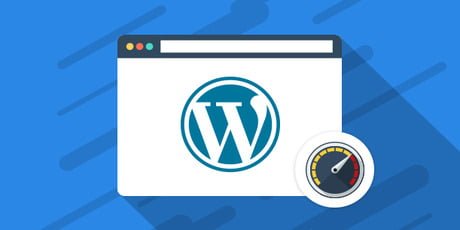Last Updated on –
7 Methods to Increase WordPress Website Speed

What causes slow down WordPress Websites?
Firstly test your website speed under websites like GTmetrix, and PageSpeed Insights and know your WordPress website speed. Based on that we have to make changes to our website.
Primary causes that slow down our website :
1) When our hosting plan is not according to essential requirements.
2) When we don’t use cache.
3) Using a corrupt plugins and Themes.
4) Extra script that requires higher resources.
5) When the page size becomes larger.
Here is your answer to the question, How to Increase WordPress website Speed ? :
1. Using Best WordPress Hosting
Choosing the best hosting for WordPress website can have many benefits for your online presence and performance. Some of the benefits are:
- Faster loading speed. WordPress hosting providers usually optimize their servers and resources specifically for WordPress websites, which can result in faster loading times and better user experience.
- Enhanced security. WordPress hosting providers often offer features such as automatic updates, malware scanning, firewall protection, and SSL certificates to keep your WordPress site secure from hackers and malicious attacks.
- Easy installation and management. WordPress hosting providers usually provide either cPanel or a proprietary admin dashboard that makes it easy to install and manage your WordPress site with one-click installation, plugin management, backup and restore, and more.
- Additional features. WordPress hosting providers may also offer some additional features that can enhance your WordPress site, such as premium plugins, staging environments, multisite support, WP-CLI access, and more.
One of the most recommended WordPress hosting is from Hostinger. They provide the best hosting under budget with a wide range of features.
2. Install and activate the Caching Plugin.
We have to use the caching plugin to make our WordPress website perform faster as the cache helps in loading our WordPress content faster than directly requesting the resources from the server. Caching is a copy of the website, using this the request and response cycle becomes faster, and the performance of our website increases. We can use plugins like Lightspeed cache and wp-super-cache.
3. Use compressed images
This is a very important step to make our website load faster and boost the speed of our website. Just try to compress the image size so we can use a plugin like WP Smush. Under this plugin, we have the option to compress our WordPress images. But it better is to first compress the image then upload it in media and use that image So, it will be more optimized. For image compression, we can use the website tinypng.com.
4. Use faster Theme and Plugin
Select the faster Theme and plugins for your WordPress website to get better performance also we have to update that regularly to maintain the theme and plugin compatibility and make website performance faster.
5. Optimize the WordPress Database
Along with the website we also have to clean our database. Cleaning the database includes the old revisions, empty tables, Tables that are not in use, etc.. we have to remove them from DB to make DB clean and Optimize. This optimization can be done by a plugin called WP-optimize. Firstly take the backup of the SQL file locally. Under this plugin, we can optimize the database and run the optimization with the default selected option only. After the optimization, check if the website is working correctly or not ? If not then simply update the backed-up SQL file to the database.
6. Use limited plugins
Try to use only required plugins, don’t install plugins that are not useful as the extra load of the plugins may also affect the website performance and security. So, if any themes and plugins are not in use, just delete them and make a cleaner website.
7. Maintain and update your WordPress website
Try to use only required plugins, don’t install plugins that are not useful as the extra load of the plugins may also affect the website performance and security. So, if any themes and plugins are not in use, just delete them and make a cleaner website.
- Updating WordPress core, themes, and plugins can fix bugs, improve security, and add new features that can optimize your site.
- Maintaining your WordPress database can reduce clutter, remove unnecessary data, and improve query efficiency.
- Cleaning spam comments and fixing 404 errors can improve user experience and reduce server load.
To maintain and update your WordPress website, you should follow some best practices such as:
- Backup your site before making any changes.
- Use a staging environment to test updates before applying them to your live site.
- Use a reliable WordPress hosting provider that offers automatic updates and backups.
- Use a performance plugin to monitor and optimize your site speed.
- Delete unused themes and plugins and keep only the ones you need.
Following these steps lets you keep your WordPress website fast, secure, and up-to-date.
Conclusion
Having a fast website can greatly enhance the user experience and encourage more people to visit your site. A website that loads quickly can make a positive impression on visitors and keep them engaged. Therefore, improving your WordPress website speed is a smart way to boost your online presence.
ready to build your website with us ? to know more Contact Us.
